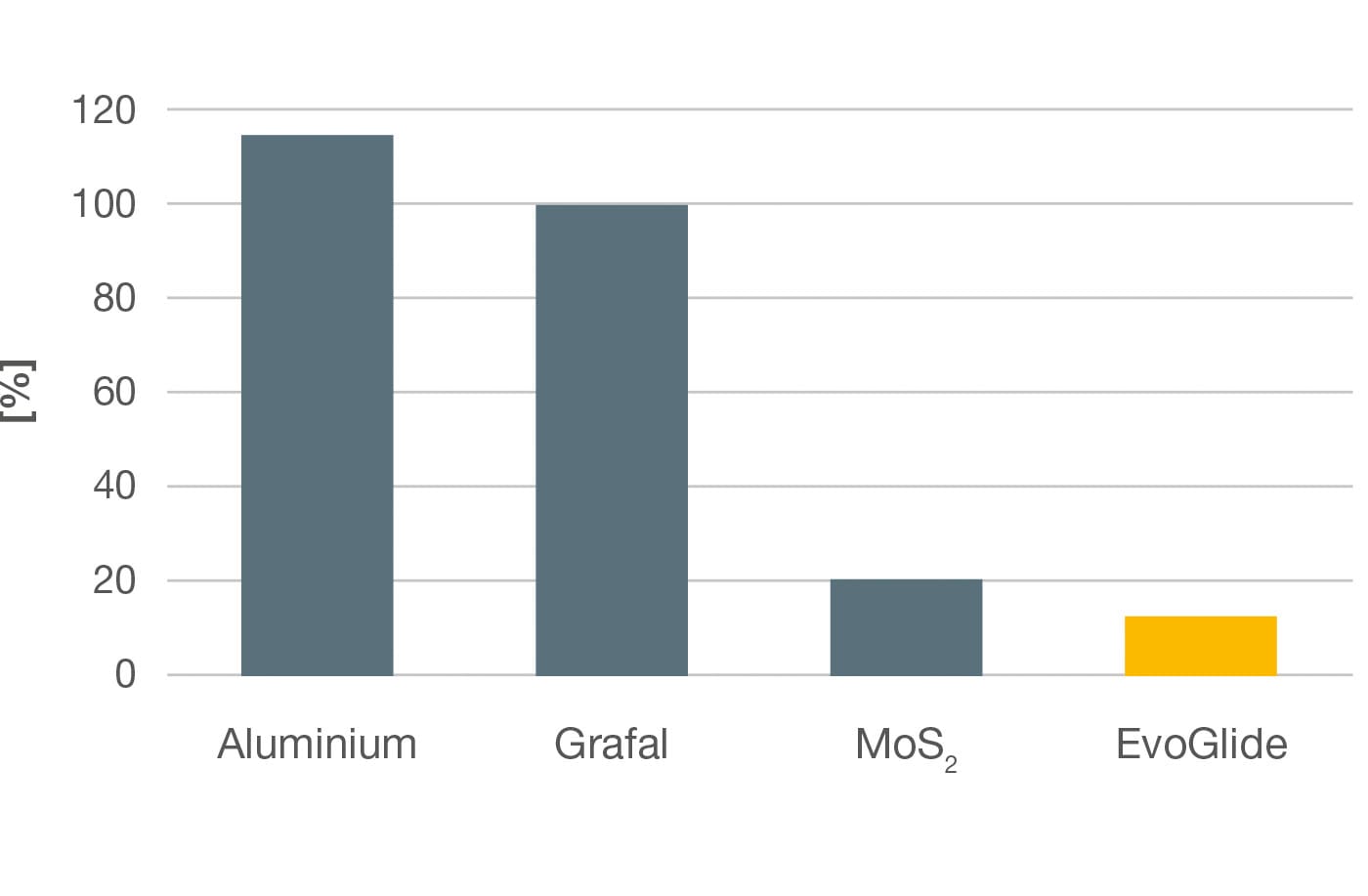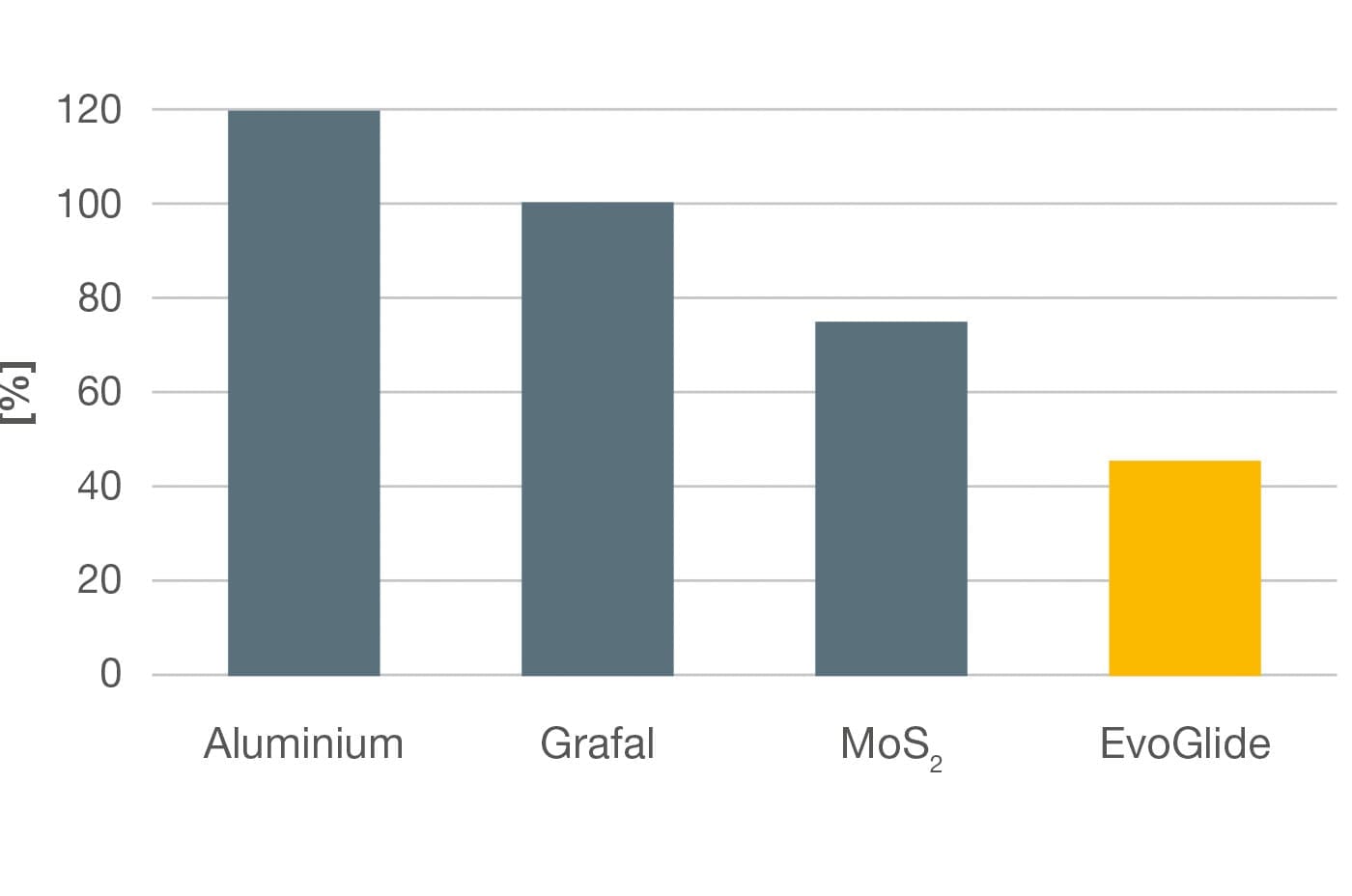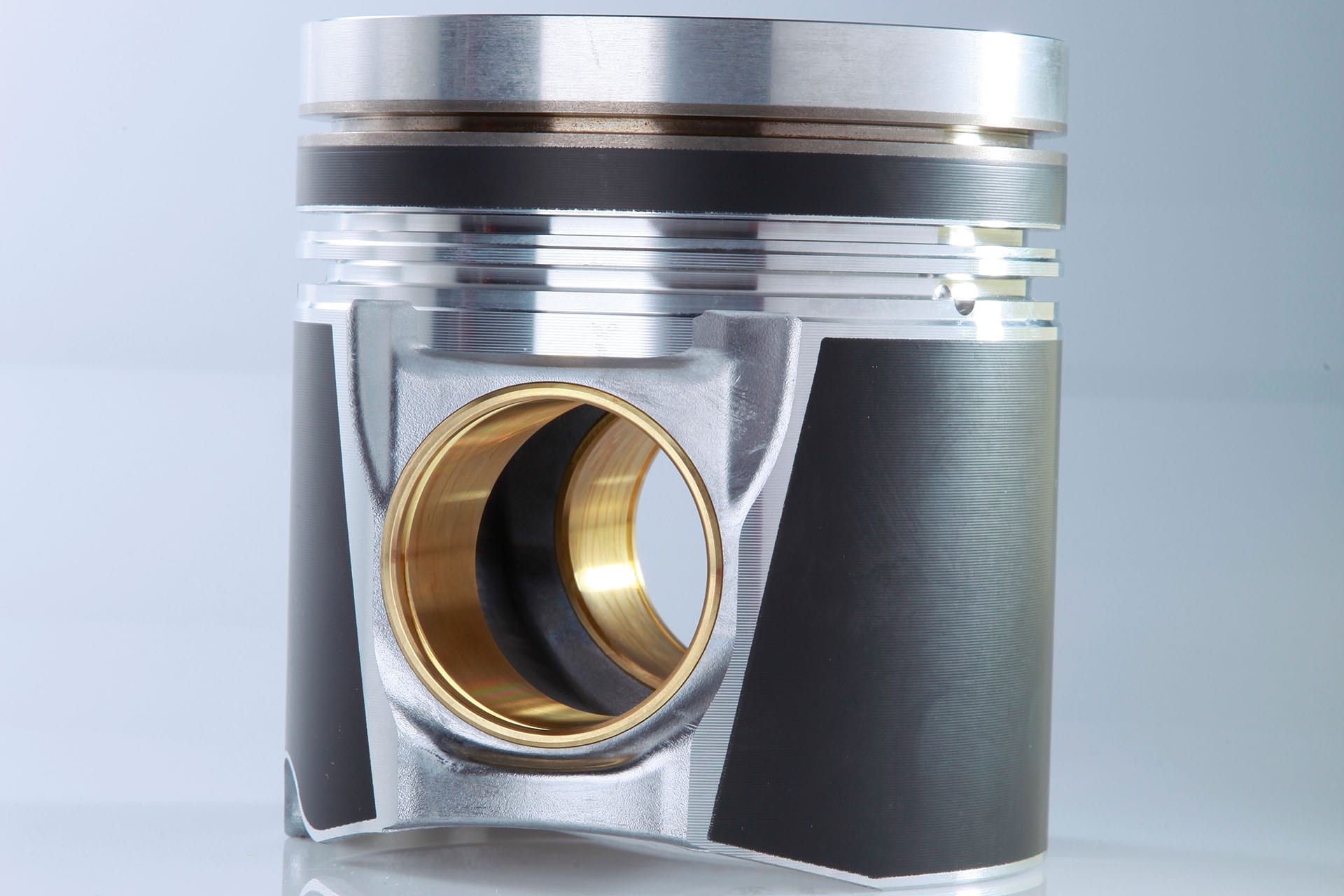Some like it hot.
Their formula includes solid lubricants, an additive mixture, a bonding system and a specific pigment volume concentration. Anti-friction coatings are high-tech products for many applications, even ones in high temperatures: inside a combustion engine, for instance. On piston skirts, anti-friction coatings get to unfold their full potential. They are an important, constructive component in the tribological system that is a piston aggregate.
Some anti-friction coating products spend the entire life span of an automobile invisible on flexible seals: on the door seals, air conditioner flaps and other vehicle components, such as the safety belt or door locking systems. Not many know that they are also used in the hottest of all spots, the combustion engine.
The first successful attempts to apply coatings to engine pistons were made by American companies in the early 1970s. They also coated other engine components, such as cylinder heads, valve springs, connecting rods and crankshafts, but for the most part, the coatings were used in racing and on classic cars. But the technology was not ready for large-scale use on modern engine pistons until the 1990s.
Engine pistons constitute an important field of application for anti-friction coatings in production engines. They are mobile components inside the combustion chamber that transform energy generated from the fuel into mechanical energy. Connecting rods transfer the linear motion of the pistons onto t crankshaft to realize a circular motion. The pistons must meet a complex set of requirements, some of which stand in contrast. They include adaptability to different operating conditions, galling resistance but high engine smoothness, a low weight but high resistance, low oil consumption and low emissions.
Anti-friction coatings play an important role in fulfilling these requirements: they help optimize the skirt performance and cope with extreme conditions that pose a risk of adhesion between the piston and cylinder (galling). Cold-starting the engine and using the automatic start-stop system already constitute a considerable strain. Galling occurs when there is a lack of local backlash due to mechanical and/or thermal deformation of the cylinder or thermal overload of the piston. An insufficient supply of lubrication or inadequate lubricating capacity of the engine oil (dilation with fuel) can also cause galling. When applied to the piston skirt, anti-friction coatings allow the piston to operate under irregular conditions, which effectively counteracts these hazards.
Friction coefficients in % relative to graphitic piston coatings (tribometer tests)
The trend towards downsized combustion engines, i.e. smaller technical dimensions to increase efficiency, has increased the strain on pistons and other components of the piston aggregate. Greater lateral forces affect the piston skirt, which further heightens the already challenging construction and coating requirements. Compared to the overall service life of the engine, the coating material must be considerably more wear-resistant – without increasing friction loss within the engine.
MAHLE, headquartered in the German city of Stuttgart, is one of the most important manufacturers of pistons worldwide. With its innovative piston technology and special coatings, the company impressively demonstrates how to meet these increased requirements.
Three different types of skirt coatings (including a competing product containing MoS2) were examined on the basis of friction measurements, which were carried out using engine trials and tribometer tests. A lubricated grey-iron body was used as a contact surface. The relevant measurand was the time to failure of the unlubricated coating. In addition, the assessors determined the friction coefficient of the surface combinations when lubricated. The results clearly demonstrated that the new MAHLE coatings and the material containing MoS2 were superior to a graphitic piston coating and the uncoated aluminum skirt. The MAHLE EvoGlide coating yields notably better friction coefficients than the competing product containing MoS2 and considerably better results for relative wear after the specified runtime (cf. figure). The MAHLE experts conclude that new coating materials combined with constructive measures offer further potential in terms of friction. BECHEM is a MAHLE development partner for the MAHLE EvoGlide coating and produces the coating material.
Relative wear and smoothing in % (engine trial)
Did you know?
2,300 °C
The peak temperature of the working gas that powers the pistons and cylinders is 2,300 °C.
100 times
During operation, engine pistons move between the two dead centers up to 100 times per second.
500 °C
The forming process of aluminum alloys generates temperatures of up to 500 °C.
X-rayed
All cast MAHLE pistons are subject to an x-ray examination for purposes of quality assurance
1000ths
The tolerances required for the installation of an engine piston are within a thousandth of a millimeter.
Cocktails
We work with a large number of precisely fortified material mixtures for a wide range of different piston types. They are used to produce aluminum alloys
designed specifically to meet the various corresponding requirements.
400 t
Heavy-duty and sports care pistons are forged. A pressing force of up to 400 tons is needed to form an engine piston.
Did you know?
2,300 °C
The peak temperature of the working gas that powers the pistons and cylinders is 2,300 °C.
100 times
During operation, engine pistons move between the two dead centers up to 100 times per second.
500 °C
The forming process of aluminum alloys generates temperatures of up to 500 °C.
X-rayed
All cast MAHLE pistons are subject to an x-ray examination for purposes of quality assurance.
1000ths
The tolerances required for the installation of an engine piston are within a thousandth of a millimeter.
Cocktails
We work with a large number of precisely fortified material mixtures for a wide range of different piston types. They are used to produce aluminum alloys designed specifically to meet the various corresponding requirements.
400 t
Heavy-duty and sports care pistons are forged. A pressing force of up to 400 tons is needed to form an engine piston.
Innovative engine piston development – lightweight with optimized friction.
An interview with Dr. Reinhard Rose, European Director of Surface Technology, Engine Systems and Components at MAHLE GmbH in Stuttgart.

Dr. Reinhard Rose, European Director of Surface Technology, Engine Systems and Components at MAHLE GmbH in Stuttgart.
Carl. Your lightweight gasoline piston EVO-TEC 2 won the renowned New Pace Award 2015. Why?
The specialist jury appreciated the innovative design of the piston, whose lightweight construction and optimized friction increase the efficiency of gasoline engines considerably.
Carl. What are the developmental highlights of this piston concept?
In many cases, conceptual advancements in the CO2 reduction of gasoline engines put a significantly larger thermomechanical strain on the piston, which must bear this load at minimal weight. It used to be customary to use asymmetrical piston skirts with the larger shell surface facing the pressure side so that the load was borne by a larger surface. The EVOTEC 2 reverses this principle. The hydrodynamic friction is directly proportional to the size of the friction surfacesin contact. This helps reduce friction. A further significant reduction is achieved by decreasing compression height. This leads to the use of a longer connecting rod, which reduces the lateral force affecting the piston skirt and, in turn, the corresponding friction.
Carl. What role does the piston coating play?
Anti-friction coatings generally reduce cold-friction wear. This occurs when the engine management injects increased amounts of fuel during cold operation. Excess and unburnt fuel can dilute or wash away the oil film, which usually causes wear if the piston skirt does not have a coating. In the worst case, this leads to galling.
Compared to metal coatings, antifriction products wear relatively easily. This ensures that the piston can adapt to the shape of the cylinder perfectly in case of distortion. A similar mechanism occurs when there is a short-term lack of backlash for motoric reasons. If the anti-friction coating can rapidly wear by a few μm, the newly gained backlash will protect the system from galling.
Anti-friction coatings play another important role when there is a sudden shortage of oil. The solid lubricants contained in the formula provide emergency lubrication to compensate for these extremely critical conditions.
EvoGlide has a special formula that combines all of the above characteristics in way that ensures the corresponding functions even beyond the service life of a piston engine.
Carl. What are the next major challenges in the field of piston development?
There is an increasing tendency towards greater surface power density. In diesel cars, this demand is met with steel pistons. Depending on the design, new cooling concepts are necessary – especially for engines under particularly high load conditions. As a result of the increased heat flow e.g. into the piston skirt, the anti-friction coating is subject to higher and higher temperatures. One challenge we are facing is the need for new formulas. We must develop antifriction coatings that can withstand permanent temperatures around 280 °C while simultaneously bearing mechanical loads.
In gasoline cars, steel pistons are not relevant at this stage. But both load and temperature will continue to rise as a result of supercharged engines in this segment, too.
A lot of development is taking place in engine oil and additives at the moment. Oils are of lower and lower viscosity – up to grade 0W8, in fact. The use of HTHS (High Temperature High Shear) oils also reduces fuel consumption, especially at higher temperatures. At the same time, pistons must withstand increasing load. Of course, this also applies to piston skirt coatings. In certain circumstances, the use of modified oil additives can slowly corrode the matrix material of the coating. But we still need solid results in this field. MAHLE is collaborating closely with a producer of engine oils to this end. One field of activities deals with potential effects on the stability of antifriction coatings.
In conclusion, any further measures taken to reduce CO2 will constitute enormous challenges for piston stability and anti-friction coatings. We are glad to be working with BECHEM, an expert development partner who has already started tackling these challenges.
Write us if you want to learn more about our Anti-friction coatings.
Error: Contact form not found.
Product insights.

Dr. Timo Stukenkemper
Application Expert
Anti-friction coatings
Other topics
Nothing found.



